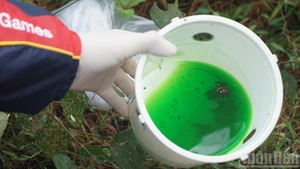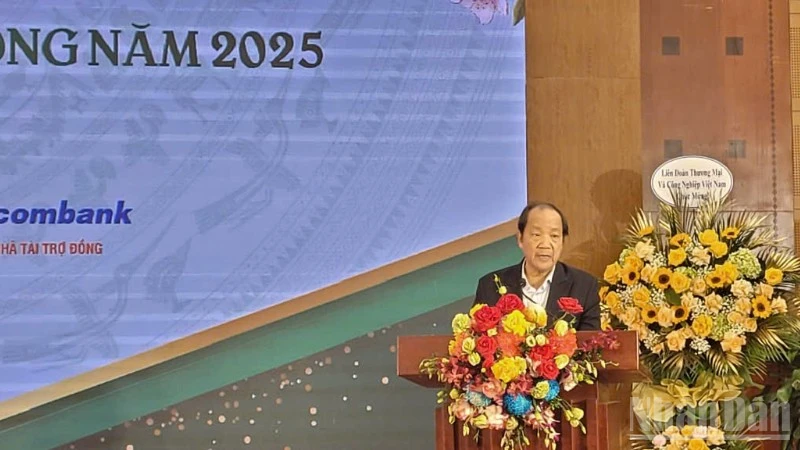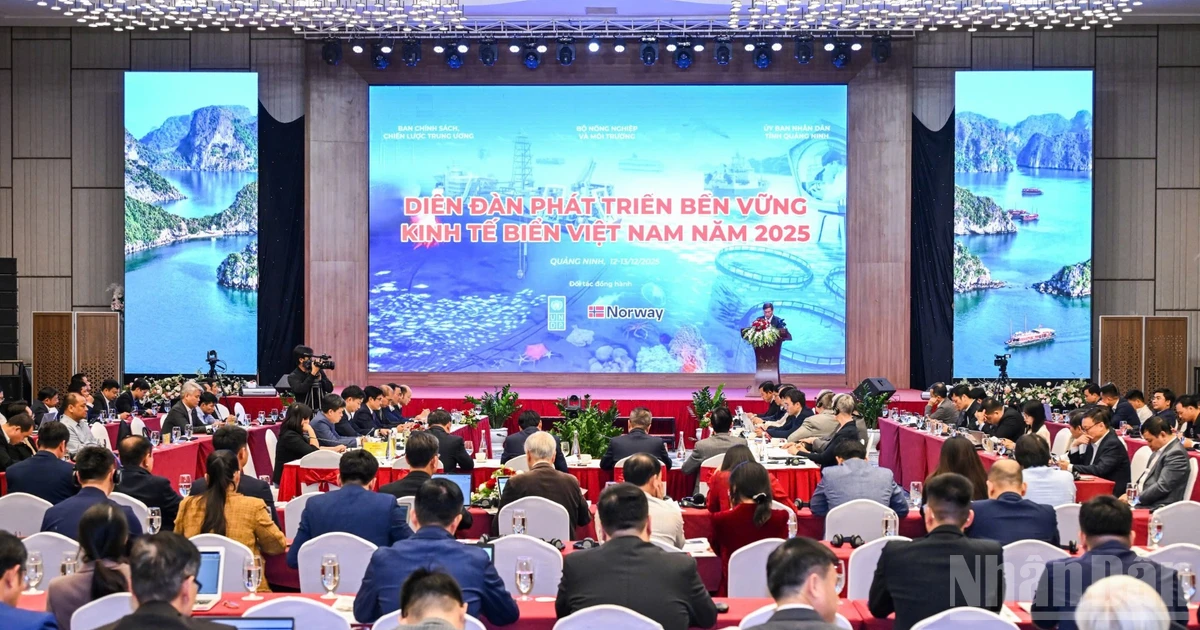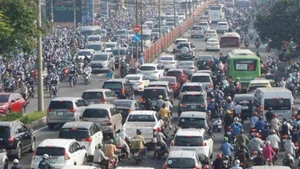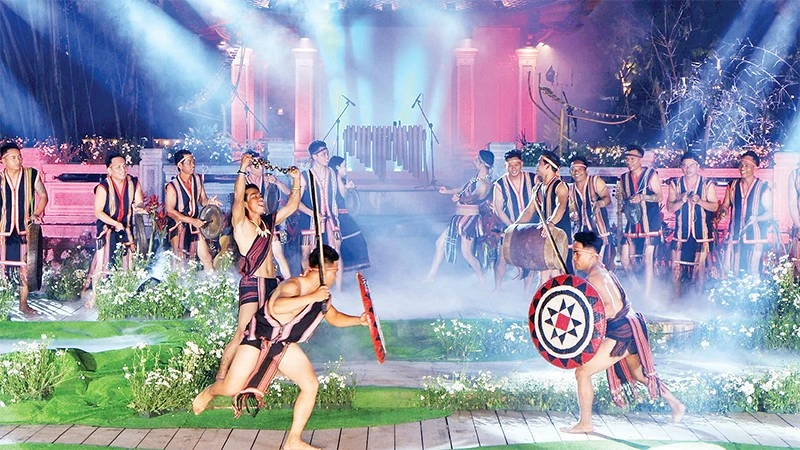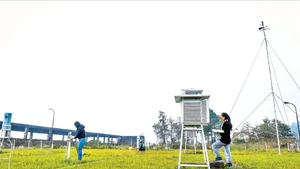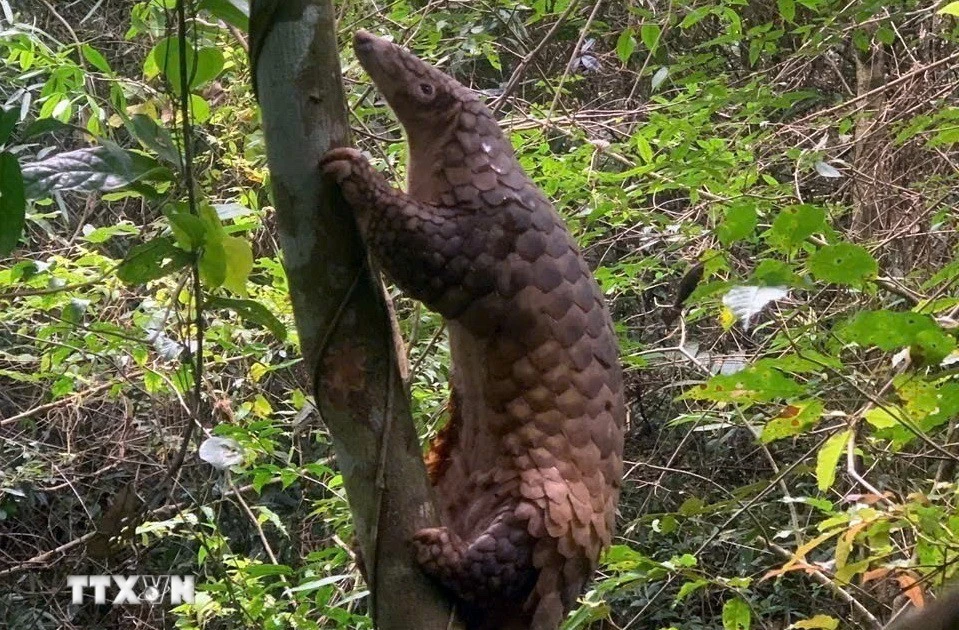Happiness of turtle rescuers
“I am saving a turtle at Cua Tung port”. After having received a phone call from engineer Tran Khuong Canh, I immediately got on the bus to go 40 kilometres along the coastal defence road to be present at Tung Luat village, Vinh Giang commune, at the end of the Ben Hai river, to take part in a sea turtle rescue. It was midday of a very sunny day but I could still see happiness on Canh’s sweaty face when he saved a rare turtle. Holding the turtle on his lap, Canh carefully checked whether it was healthy or not. He was very surprised as one month earlier, he and his colleagues had rescued this turtle about 30 kilometres south of the coast and tagged an identity card coded VN(C)00182 on it. It turned out that this turtle accidentally swam upstream into Cua Tung port to Ben Hai River for more than 2 kilometres before being caught in the net of fishermen. After a month, the turtle had increased from 12kg to 13.7 kg. This was the first time Canh and his colleagues rescued an individual turtle twice.
Canh recounted that one of the most interesting rescues was in Trung Giang commune, Gio Linh district. A fisherman named Nguyen Van Doan from Bac Son found a 12-kg turtle accidentally caught in his fishing net about a nautical mile off the shore. He then immediately informed the local authorities. On the day of the turtle’s release to the sea, Doan asked the rescue team to let his son join the event as he thought it would be a very helpful lesson to educate awareness on the environmental protection for the boy. The Marine Protected Area Management Board kindly invited Doan’s son to join the release. When swimming to the sea, the turtle headed back three times to the shore as if it wanted to thank them while the boy looked very happy.
Another of Canh’s memorable stories was on the last day of 2018, two fishermen Nguyen Van Thoan and Nguyen Van Dang from Bac Son village, Trung Giang commune, discovered two turtles caught in a net at the same time. One weighed 9kg, the other was 10kg. The two fishermen immediately took photos, measured the size of the turtles and reported them to the Marine Protected Area Management Board. This was the first time that a rescue was implemented for two turtles at the same time. This hardly ever happens because turtles usually swim and hunt alone. According to the research results of the International Union for Conservation of Nature (IUCN), only one out of every 1,000 turtles from birth to adulthood survives. Because baby turtles have to face many enemies and they are seen as prey of other species. The fact that the two turtles swam and went hunting together showed that the marine environment in Quang Tri was favourable for turtles to grow and develop.
The Con Co Island Marine Protected Area was established 10 years ago and is responsible for preserving the habitat of the sea and island areas, including the protection of rare turtles. There are currently five species of turtles which are divided into two main families living in the Vietnamese sea. A couple of years ago, a 450 kg leatherback sea turtle entered the coast of Mot village, Trieu Lang commune, Trieu Phong district to lay eggs. Fortunately, it was timely recued and safely released to the sea. This is the largest turtle ever to be rescued in Quang Tri. Most recently, in 2014, on the coast of Tham Khe village, Hai Khe commune, Hai Lang district, volunteers found a leatherback sea turtle weighing more than 300 kg laying 132 eggs. The management board then assigned four volunteers to guard the eggs for over two months. Many foreign scientists went to Hai Khe to study, but unfortunately, all the eggs did not hatch.
According to Nguyen Van Hoa, Director of the Con Co Island Marine Protected Area Management Board, the turtle’s continuous appearance in Quang Tri sea shows that the management board has actively raised the awareness of local people on turtle protection and the marine environment of Quang Tri has returned to normal after the pollution incident in 2016. Sea turtles are considered as an environmental indicator. Where there are turtles living, there is a clean marine environment with less pollution and human impact. From early 2018 until now, 26 turtles that were caught in fishermen’s nets have been released safely back to sea. Con Co Island is currently a very good habitat for turtles, especially in two areas with coral reefs and grass beds around Con Co Island and the beach area from Cua Tung town to Vinh Thai commune, Vinh Linh district.
A dream for turtle breeding grounds
The conservation of sea turtles has many contents such as raising awareness of fishermen on protecting and releasing turtles back to the sea as well as protecting turtle breeding grounds. Thanks to the help of the IUCN in Vietnam, Quang Tri has made remarkable progress in this work. Returning from a night of investigating turtle breeding grounds, Nguyen Van Hoa could not hide his worries. Previously, in the breeding season, from March to August, many turtles went to the beach to lay eggs. He said he could clearly hear the sound of the turtles digging burrows and their loud breathing. Now, due to shrimp farming, and the development of tourism and construction, there aren’t any quiet places for turtles to choose as breeding grounds. What Hoa worried about the most was the embankments around Con Co Island, so it was no longer an ideal breeding ground for turtles. Turtles interact with nature in a very special way. They only come ashore to nest when there is about to be a thunderstorm and, after laying their eggs, the rain will erase the turtle footprints on the sand to help them avoid enemies. More miraculously, they usually find the way back to where they were born to lay their eggs.
Hoa said, in the past, sea turtles lived in almost all of the sea areas from the north to the south, however, due to many reasons, they are now only found in some areas of Quang Ninh, Quang Tri, Quang Nam provinces and Phu Quoc Island and are few in number. Sea turtles play a very important role in maintaining the stability of the marine ecosystem, with an indispensable cultural value. For example, leatherback turtles like those in Quang Tri were found in Trieu Lang and Hai Khe communes, weighing between 300 and 450 kg. They can swim the farthest, dive the deepest and enjoy eating jellyfish. Therefore, leatherback turtles help control the amount of jellyfish in the wild, providing fish eggs and baby fish – jellyfish’s main food with opportunities for growth. If the number of turtles is reduced, it will be a chance for jellyfish to grow and then reduce the number of fish in the wild.
The Con Co Island Marine Protected Area requires 18 jobs. After ten years of establishment, the staff only comprises of seven members, so each of them must work very hard to complete the job. When asked what his biggest dream was, Nguyen Van Hoa did not hesitate to point at the coast of Vinh Thai commune, Vinh Linh district and Gio Hai commune, Gio Linh district and said he wished Quang Tri province would soon plan a breeding ground on these places for better sea turtle conservation.

